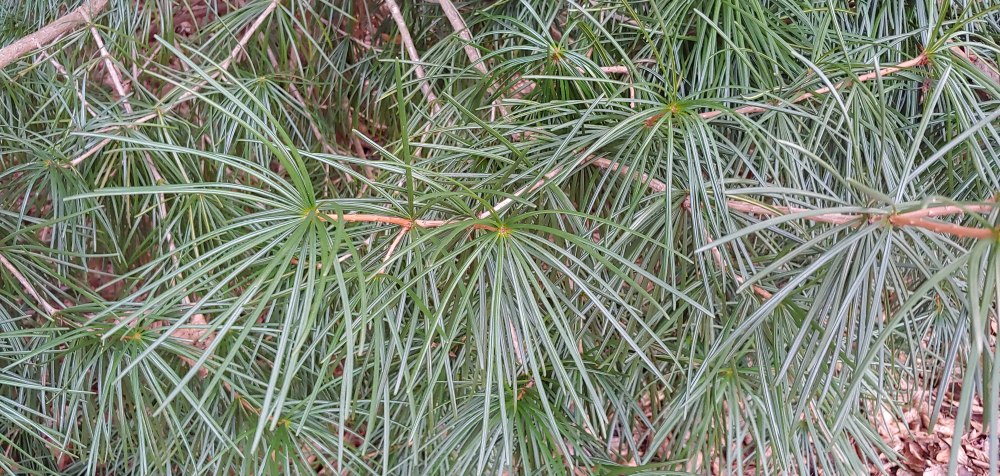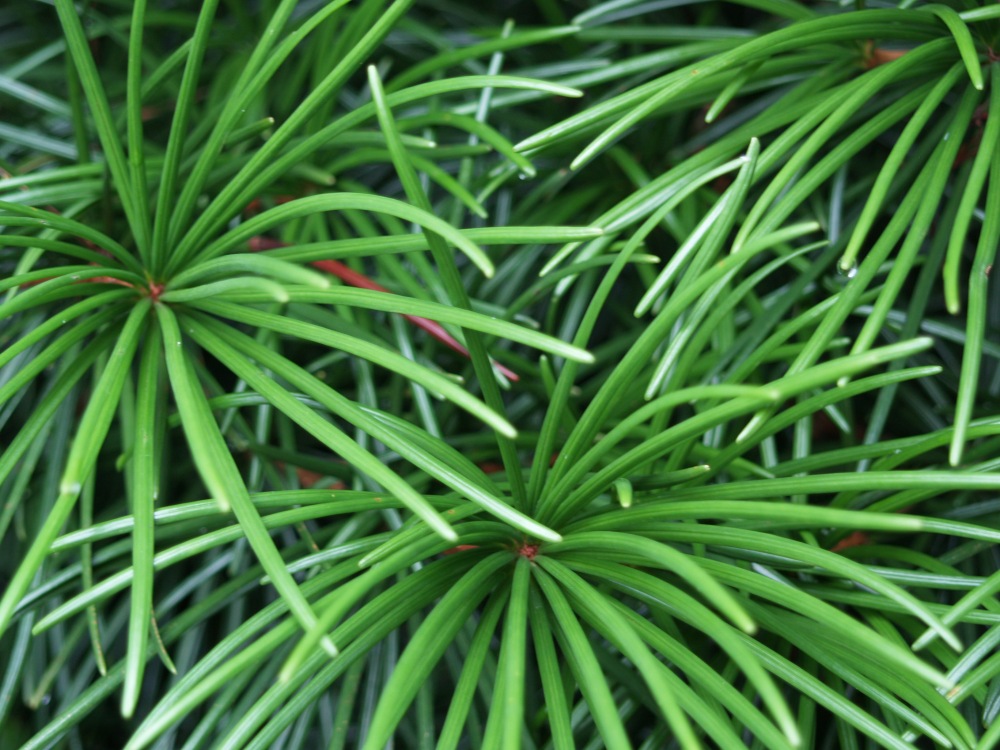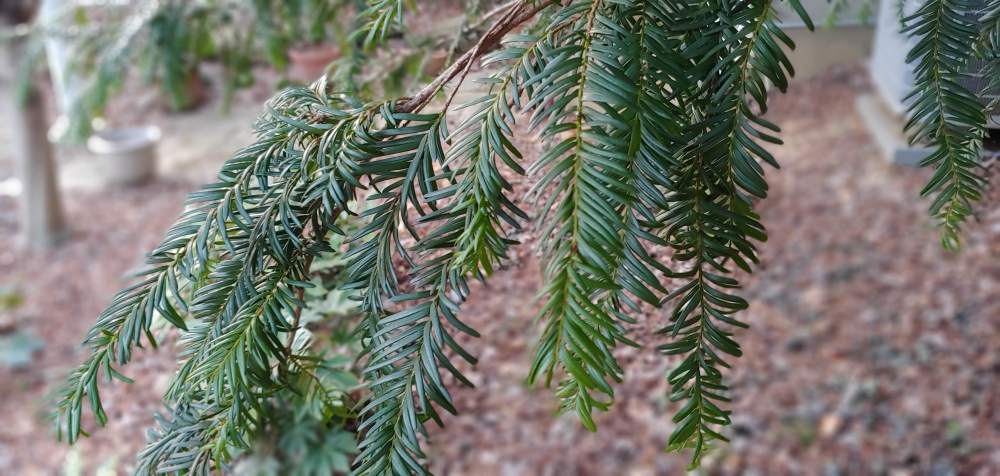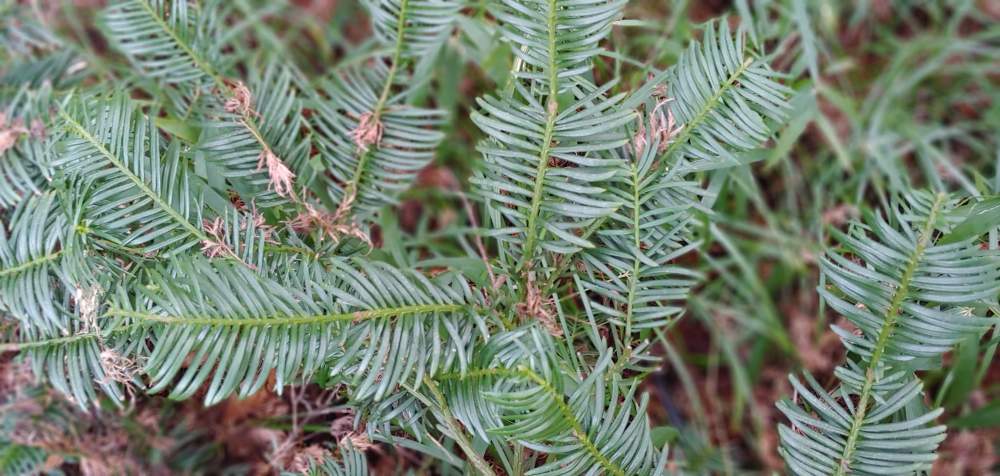It occurs to me that in a recent listing of evergreens, several notables were left out, most significantly two Japanese Umbrella pines (Sciadopitys verticillata, below) planted at the far corners of the front garden. I am uncertain what it is about the Umbrella pine that makes it treasured by so many, but there’s something about it so that it’s one of my favorites.
Certainly, Umbrella pine is slow growing, and I was heartbroken when eight feet of the top of one was broken by wind in this year’s March nor’easter. Fortunately, only two of three trunks were broken, and though a sizable chunk fell, the lower half did not suffer. So, in this densely planted part of the garden, don’t look up, and someday the damage will grow to be less noticeable.
Earlier, I’ve related that yews (Taxus) were a foundation of my introduction to the garden industry, but locally these have become less relevant as deer have eaten through many long established plantings. In this garden, only one yew has been planted, a bit of an oddity found in an Oregon nursery years ago. In a shaded location, the yellow tipped English yew (Taxus baccata ‘Dovastoniana aurea’, below) has never displayed any color beyond dark green needles with brighter green new growth, but the monstrosity that it has grown into has caused more than its share of disagreements in this household.
“Why did you plant it so close to the house?”, and “it needs to go” are repeated topics of contention in the years since the yew grew to consume a space twenty feet across, and nearly as tall. I don’t know why, planting it seemed like a good idea at the time. Never mind that long arching branches rub against the house in a breeze, and does this thing really have any ornamental value? At this point, the yew and I have been through enough skirmishes that we’re in it together.
Other yews, not Taxus but Plum yews (Cephalotaxus) serve a more practical purpose in the garden. These are quiet, hardly noticed, with green needles that bring an evergreen presence to shaded areas, while resisting damage from deer. In an area planted with hostas, Solomon’s Seals, and other seasonal woodland gems, this is the anchor, one that doesn’t cause the kettle to boil.
I don’t understand that umbrella pine either. We grew some for a while because ‘landscapers’ wanted them, but when they grew up, we were stuck with them. It is the sort of thing that no one wants to admit not liking, but by now, I am none to keen on them. They are nice, but they would be nicer in someone else’s garden.
Too slow, too expensive, and not distinctive enough for most people.